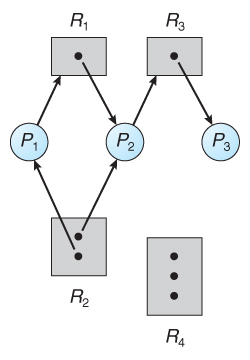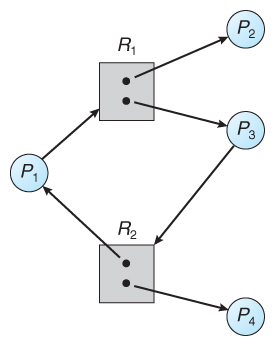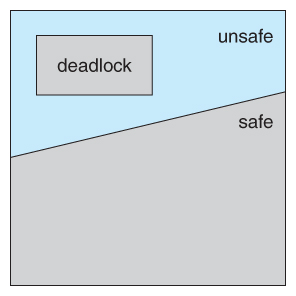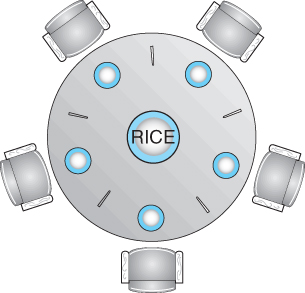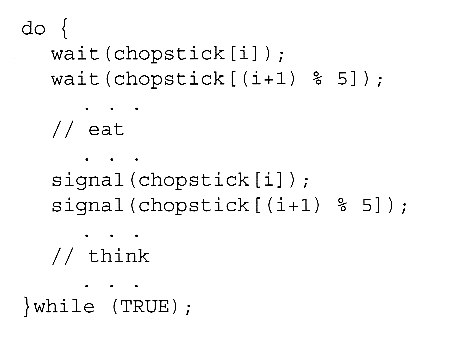- Mutual Exclusion
- At least one resource must be held in a non-sharable mode
- If any other process requests this resource, then that process must wait for the resource to be released.
- Hold and Wait
- A process must be simultaneously holding at least one resource and waiting for at least one resource that is currently being held by some other process.
- No preemption
- Once a process is holding a resource ( i.e. once its request has been granted ), then that resource cannot be taken away from that process until the process voluntarily releases it.
- Circular Wait
- A set of processes { P0, P1, P2, . . ., PN } must exist such that every P[ i ] is waiting for P[ ( i + 1 ) % ( N + 1 ) ]. ( Note that this condition implies the hold-and-wait condition, but it is easier to deal with the conditions if the four are considered separately. )
- a set of Resource Categories, { R1, R2, R3, . . ., RN } (which appear as square nodes on the graph)
- Dots inside the resource nodes indicate specific instances of the resource
- a set of Processes, { P1, P2, P3, . . ., PN }
- Edge
- Request Edges
- Assignment Edges
The way to not let deadlock happen (Do not allow the system to get into a deadlocked state)
- Prevention 預防: Static Strategy
- Design a resource allocation algorithm
- Avoidance 避免: Dynamic Strategy
- Keep track of the resource allocation status, and allocate the resource based on the decision
Other possible solution (but deadlock may happen)
- Ignoring Deadlock: Ostrich Algorithm 鴕鳥演算法
- If deadlocks only occur once a year or so, it may be better to simply let them happen and reboot as necessary than to incur the constant overhead and system performance penalties associated with deadlock prevention or detection.
- This is the approach that both Windows and UNIX take.
- Detect and Recover: Deadlock Detection Algorithm
- Abort a process or preempt some resources when deadlocks are detected
Deadlocks can be prevented by preventing at least one of the four required conditions
Key: To break one of the "4 necessary condition"
Safe State
TBD
TBD
TBD
Basic approaches to recovery from deadlock:
- Inform the system operator, and allow him/her to take manual intervention
- Terminate one or more processes involved in the deadlock
- Preempt resources
Operating System Concepts 9ed.
- Ch7 Deadlock
- Ch7.2 Deadlock Characterization
- Ch7.2.1 Necessary Conditions
- Ch7.2.2 Resource-Allocation Graph
- Ch7.3 Methods for Handling Deadlocks
- Ch7.4 Deadlock Prevention
- Ch7.5 Deadlock Avoidance
- Ch7.5.1 Safe State
- Ch7.5.2 Resource-Allocation Graph Algorithm
- Ch7.5.3 Banker's Algorithm
- Ch7.6 Deadlock Detection
- Ch7.7 Recovery From Deadlock
- Ch7.2 Deadlock Characterization
- Notes
